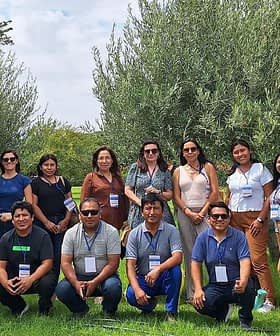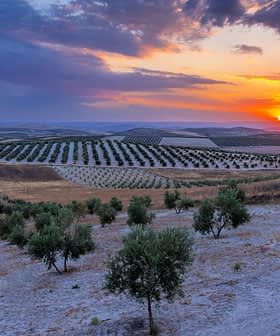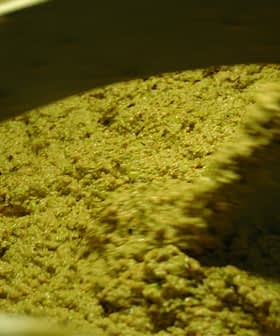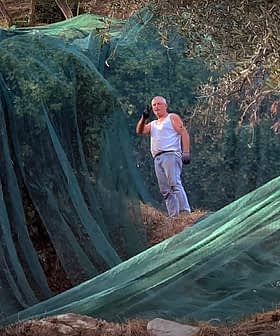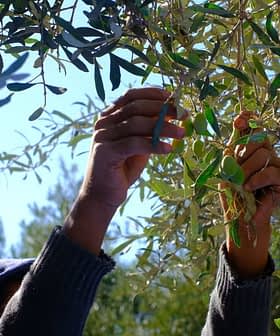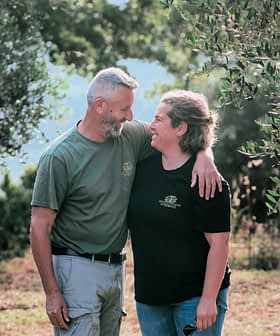Casas de Hualdo: In the World of Don Quixote
I thought good oil could only be produced in small quantities, like a good cup of coffee. Casas de Hualdo represents a thought-provoking mix of quantity and quality.
 Casas de Hualdo
Casas de HualdoThe article discusses the Tajo River in Spain, highlighting its environmental challenges and the success of Casas de Hualdo, a premium olive oil producer located near the river. Under the direction of Jose Peche, the estate has become a major player in the high-quality olive oil market, producing large quantities of award-winning oils using modern techniques and a focus on cleanliness and quality.
The longest river in Iberia, the Tajo, runs westward across Spain some 600 miles from its source high in the Aragon mountains, circling ancient Toledo’s ramparts and emptying into the Atlantic near Lisbon.
By many accounts, it’s a river in crisis, threatened by pollution, too many dams (51 hydropower dams in Spain alone), and the effects of an unrelenting, years-long, drought that has reduced water flow in parts of the river to barely sustainable levels.
But from where I’m standing, west of Toledo on a low rise that looks down on the swift-flowing river it’s hard to see the Tajo as anything but abundant, dazzling blue as it reflects the sky in mid-November. Despite the wintry landscape, the rippling water dances between the banks, close to overflowing.
As I learn from Jose Peche, who brought me here to show me the river, the abundance of fresh water from the Tajo is one reason behind the remarkable success of the olive oil he makes at Casas de Hualdo, just over the hill behind us, one of Spain’s newest, largest, and most notable estates.
Peche has been managing director of Casas de Hualdo for the past 20 years since the estate began seriously producing olive oil. The first 300,000 trees were planted in 1996, with an initial small harvest in 1999. Under Peche’s direction, a state-of-the-art mill was added ten years later and the following year the first bottles of Casas de Hualdo went off to market.
Twenty years is not long in Spain where some estates go back half a millennium in the same family. Hualdo is a youthful interloper, the result not of generational traditions but of the dreams of one man, the late Francisco Riberas, a discreet steel magnate, said to have been one of the richest men in Spain.
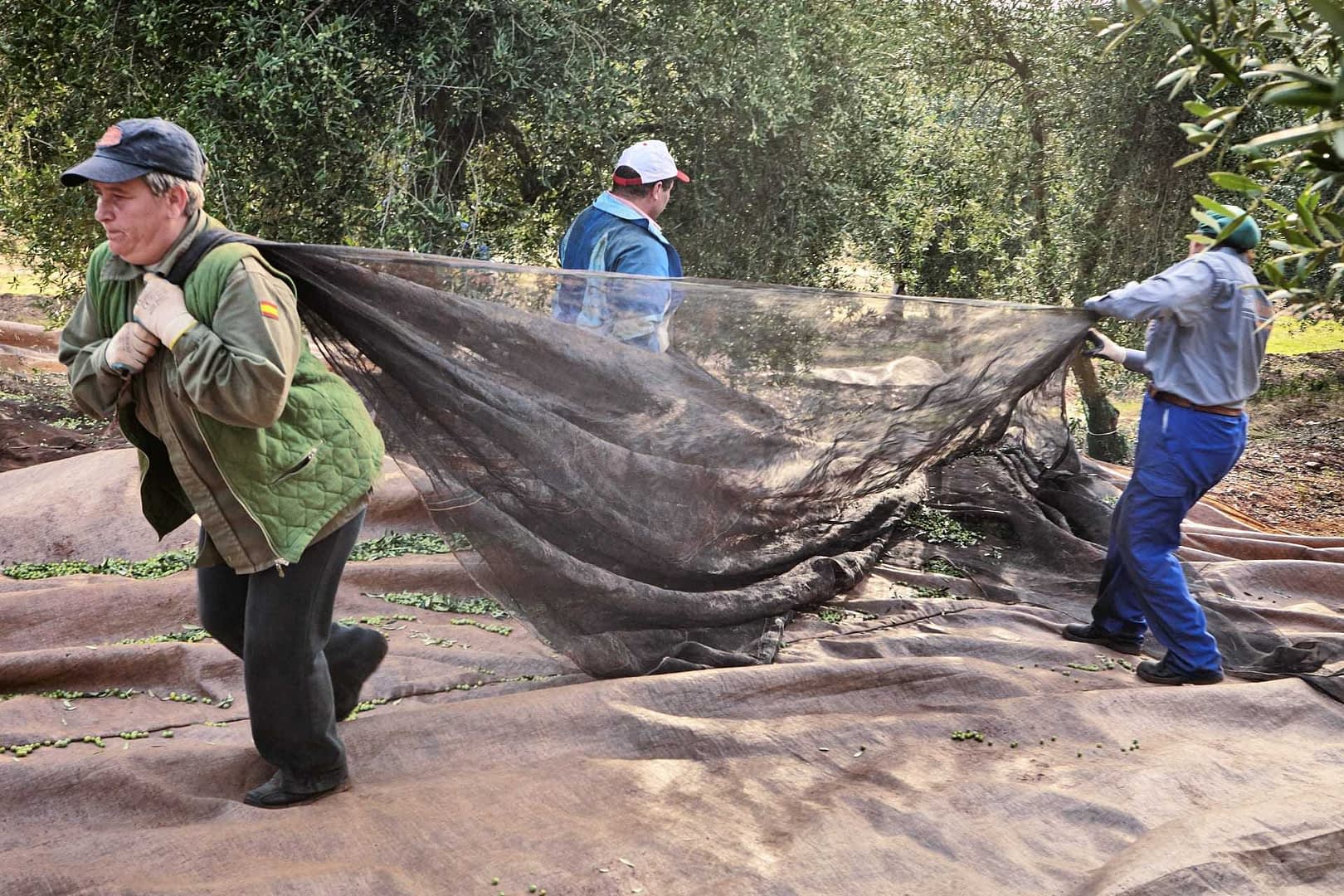
Pulling nets at Casas de Hualdo
In the 1980s, Riberas bought 400 hectares (nearly 1,000 acres) of this undulating river valley that rises to the Montes de Toledo to the south, for use as a hunting preserve. Added to over the years, the estate today comprises 40,000 hectares (nearly 10,000 acres), a closely guarded property where wild animals — boar, deer, rabbits and long-horned mountain sheep — roam freely.
Something about the landscape also tweaked Riberas’s agrarian aspirations for it was he who had the olives planted — 300,000 of them, Arbequina, Manzanilla, and the Spanish workhorses Picual and Cornicabra — on some 680 hectares (about 1,680 acres) of the estate. Casas de Hualdo is a closely held family affair, still owned by the Riberas family and still producing olive oil.
As estate manager, Peche is given free rein to run what amounts to a self-sustaining olive farm that also produces fodder (barley, wheat, rye, and maize corn) for a herd of nearly 2,000 Manchega sheep — expected shortly to begin providing milk for cheese made on the farm, also under the direction of the multi-talented Peche.
Manure from the sheep fertilizes the olive groves as well as a substantial orchard of pistachio trees, while olive pits provide fuel for farm operations; the residue of oil production, including pruned branches, is recycled back into the land. Solar power is used wherever possible (this is sunny Spain, after all), including to pump Tajo river water for irrigation.
All of this is controlled by a wide-ranging computer network that tracks everything from the humidity of the soil to the ripening stage of individual plants to the temperature of the olive paste as it goes through the malaxer.
The estate represents a thought-provoking mix of quantity and quality — a fine example of what enthusiastic owners with plenty of money can achieve, especially with wise stewardship.
Under Peche’s careful guidance, Casas de Hualdo has become a premium, award-winning brand, joining the growing ranks of very high-quality oils from Spain. All this in a very short time.
Moreover, the quantity of fine extra-virgin produced on the estate is remarkable. In an ordinary year, Peche told me, the target is 600 tons of oil, or about 750,000 liters (because of persistent drought, the 2019 campaign was low, yielding only 430 tons).
I know of no other high-end Spanish producers who come even close to that mark. Castillo de Canena, for instance, another producer of exceptional oils, makes 80,000 liters annually, and others (such as Marques de Griñon, Masia Altet) are in a similar range.
Before I visited Casas de Hualdo, I thought good oil could only be produced, like a good cup of coffee, in small quantities. It had always seemed clear to me that so much Spanish oil was mediocre precisely because it was produced in vast quantities from giant cooperatives that drew on dozens, often hundreds, of farms.

Oil coming out at Casas de Hualdo
Quality control at such a scale is almost impossible. Olives are harvested too late, handled indifferently, kept too long before milling, and generally treated as a commodity crop and not something to command a high-end luxury market.
Much of the oil, distinguished by its fusty flavor, is sold in bulk, often to bottlers in Italy who mix it with similar oils from all over the Mediterranean, sending it to market with the coveted Made in Italy label. (Spanish producers always cry foul but long before the introduction of the euro, it was Spanish oil makers who deposited Italian lire in their local banks; in other words, no one forced the Spanish to do this — it was just easier than putting the effort into making great oil.)
Of course, there were Spanish producers who paid attention to quality but they were precious few in number, made small quantities, and were often difficult to find in the international marketplace.
In the last 30 years or so, all that has changed, and Casas de Hualdo has become a major part of the change.
Under Peche’s direction, the estate bottles four monovarietal oils (Arbequina, Manzanilla, Picual and Cornicabra) plus a blend called Riserva di Familia and the adorably cute, cartoon-labeled Casitas de Hualdo, intended to entice children with their very own first olive oil.
These are distinctive bottlings, each with its own flavor profile but each also with a kind of prickly spiciness that I associate with the dry, acerbic landscape of La Mancha — Quixote country — the place Casas de Hualdo calls home.

Casas de Hualdo
So how, I asked Jose, is he able to produce such quality in such quantity? What is the secret to making so much high-quality oil?
He answered over the course of four days as we toured the estate (chasing elusive roe deer), observed the harvest (late-ripening Picual and Cornicabra), donned protective gear to visit the immaculate mill, and sat around a broad oak table tasting the first new oil in all its vegetative glory.
“Just following the rules,” Jose explained.
Cleanliness is all-important, as well as keeping the fresh harvest at low temperatures throughout the extraction process. And speed: “Modern equipment and techniques,” he said, “have brought about a kind of revolution. It’s not possible to produce high-quality olive oil with the old ways. Of course, there are things we miss in old recipes, old products, but that’s not the case for olive oil.”
Clean, clean, clean, he emphasized over and over again, and you only get that scrupulous cleanliness with stainless steel equipment throughout harvesting, milling, malaxing, extracting, filtering, and then, of course, storing in stainless vats under a flush of nitrogen to protect the delicate nature of the oil.
The results are outstanding. Casa de Hualdo earned Gold Awards for its Picual and Riserva de Familia at the 2019 NYIOOC World Olive Oil Competition, and the Italian directory Flos Olei has granted high marks (97 to 99 points) to Casas de Hualdo’s Picual, Manzanilla, and Cornicabra. But a guidebook isn’t necessary to understand the quality of these oils.
The finest Spanish oils, to my taste at least, have a softness, a lushness that is enormously appealing to the North American palate. Casas de Hualdo’s oils are no exception.
At the same time, they’re distinguished by that dry, prickly, acerbic, almost straw-like character that I mentioned earlier. For me, it’s a perfect balance of grace and clarity. And it speaks strongly of this place in the world — austere and yet, like Don Quixote himself, muy simpatico.


